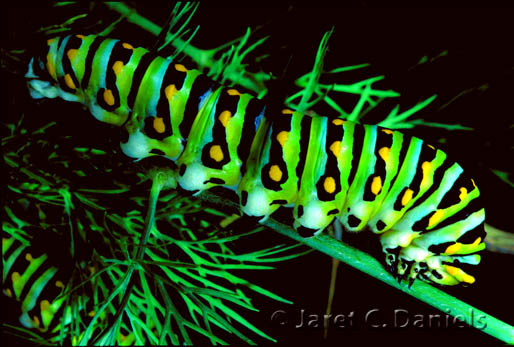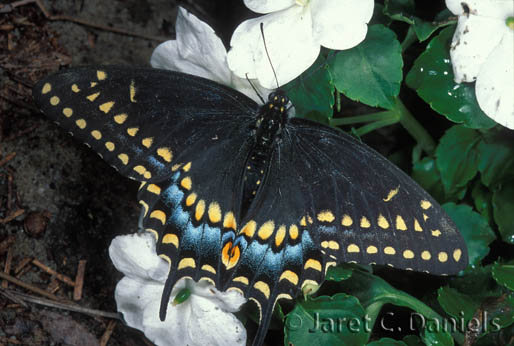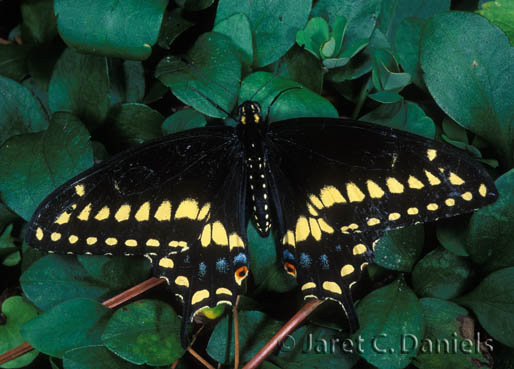- Family name: Papilionidae/Swallowtails
- General description: Male black with broad yellow submarginal band and row of yellow marginal spots. Female black with yellow submarginal band reduced or absent; hindwing with increased blue scaling. Hindwing has single tail and orange eyespot containing central black pupil. Ventral hindwing with submarginal and marginal spots containing orange, as well as a single yellow-orange cell-spot. Abdomen with longitudinal rows of small yellow spots.
- Field Marks: General: Single black hindwing tail; orange hindwing eyespot with central black pupil; abdomen with longitudinal rows of yellow spots; ventral hindwing with yellow cell-spot Male: wings with broad yellow band and bordered by row of yellow spots Female: yellow spot band reduced or absent; hindwing with increased blue scaling
- Sexes: appear different

- Wingspan: 66-90
- Life Cycle: Egg: yellow, spherical, laid singly on host leaves or flowers Mature Caterpillar: Green with black bands on each segment containing yellow-orange spots Chrysalis: Brown with dark striations or green
- Number of Generations: 3 or more per year
- Flight Season:
- Abundance: Common
- Habitat: Roadsides, gardens, parks, old fields, agricultural land, meadows, pastures, disturbed sites

- Larval Host Plants: Native, cultivated, and naturalized plants in the carrot family (Apiaceae) including parsley (Petroselinium crispum), dill (Anthum graveolens), fennel (Foeniculum vulgare), mock bishop’s weed (Ptilimnium capillaceum)
- Similar Species: No similar species
- Additional Information: Mimics Pipevine Swallowtail (Battus philenor). Range is limited in Arizona and Wyoming.
- Range in Florida
 The Florida Wildflowers & Butterflies projects at the Florida Museum are sponsored in part by the State of Florida and the Florida Wildflower Foundation, Inc.
The Florida Wildflowers & Butterflies projects at the Florida Museum are sponsored in part by the State of Florida and the Florida Wildflower Foundation, Inc.
